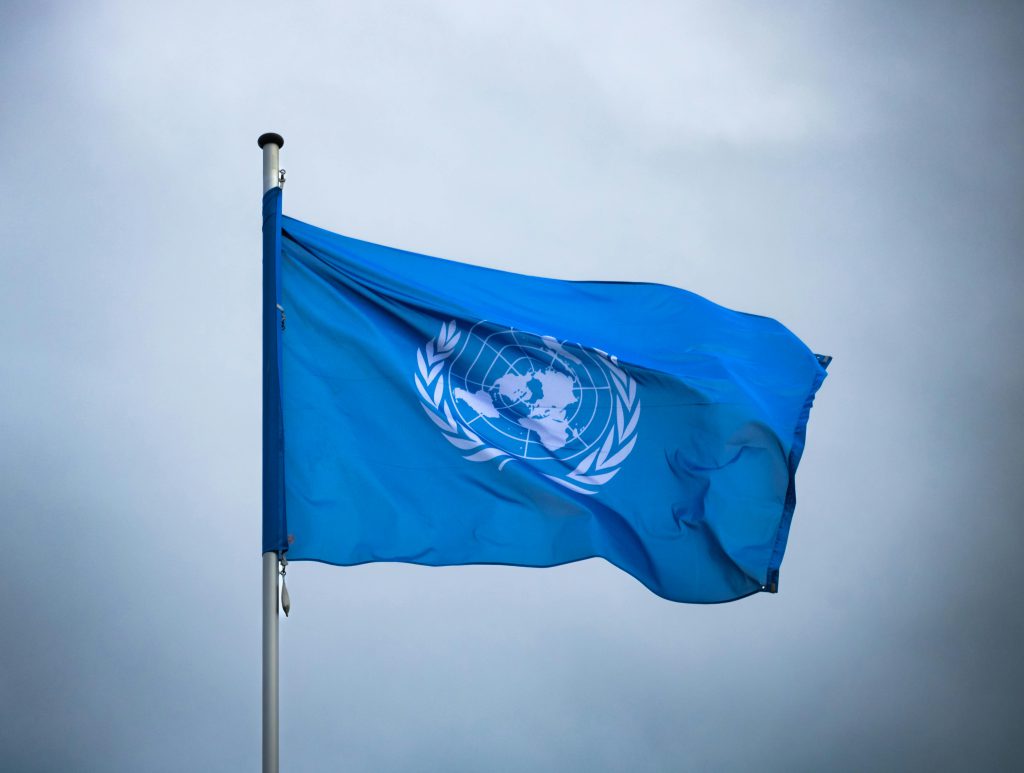Sustainable Development Goals: How the UNs Benchmarks Align with Sahiyo’s Mission to End Female Gential Cutting

By Elaina Baliner Sahiyo’s Fundraising and Auction Intern Elaina Baliner is a recent graduate of The Ohio State University where she earned a Bachelor of Science in Health and Rehabilitation Sciences with a minor in Biology. A passionate global health equity advocate, Elaina actively seeks to maximize positive impact and close health equity gaps. Recently Elaina sat down with Sahiyo’s Editorial Assistant, Megan Seaver, to discuss the connection between Sahiyo’s mission to end FGC and the UN’s Sustainable Development Goals. What are the UN Sustainable Development Goals? The United Nations Sustainable Development Goals, (SDGs), are the 17 benchmarks set by the UN in order to achieve peace and prosperity for both people and the planet. These goals center on a One Health approach, meaning that the health of people, planet, and animals all intersect with each other. They are designed to break silos within the UN, addressing a longstanding issue of treating personal health, animal health, and planetary health as separate concerns rather than recognizing them as inherently interconnected. The SDGs are critical in guiding the global effort to push for a better world, addressing a range of interconnected challenges such as poverty, inequality, and environmental degradation. For Sahiyo, the goals that are most closely aligned to our mission of ending FGC are: SGD 3 Good Health and Well-being for All, and SDG 5 Gender Equality — specifically target 5.3 — which calls for the elimination of all harmful practices, including FGC. How do the goals of Good Health and Wellbeing for All, and Gender Equality, relate to Sahiyo’s mission? Sahiyo aligns with SDG 3, Good Health and Wellbeing for all, by advocating for the health rights of women and girls. FGC can lead to severe health complications such as chronic pain, infections, increased risk in child rearing complications, psychological trauma, and so much more. By raising awareness of FGC, Sahiyo also shines a light on the physical, mental, and social issues that the practice causes. Sahiyo also works closely with healthcare professionals to ensure that when survivors do seek care for complications related to FGC, the care they receive is culturally sensitive and wholly beneficial for the survivor. SDG 5, Gender Equality, is at the heart of Sahiyo’s work. The third target of SDG 5, also referred to as SDG 5.3, calls for the elimination of FGC. By providing resources and skills to communities affected by FGC, Sahiyo uplifts survivors’ voices, helping them to share their stories with the world and providing a space for narrative autonomy, which is crucial in promoting gender equality. Why do you think it’s important that Sahiyo ensure that its projects and programs connect to these goals outlined by the UN? Connecting our work to the UN goals situates FGC within a broader global context, highlighting that it is not merely a local or regional issue, but a critical matter of international concern. Additionally, aligning with the SDGs ensures that our projects are contributing to measurable, impactful change. The SDGs provide a framework for tracking progress and accountability, allowing us to demonstrate the effectiveness of our interventions in a globally recognized manner. Finally, by aligning with these goals, we can better advocate for the necessary support and resources to expand our impact, demonstrating that our efforts to end FGC and protect women and girls are part of the collective global movement toward a more equitable and healthier future for all. Do you think that the UN is doing enough to address FGC? The UN has made significant strides in addressing FGC through initiatives like the International Day of Zero Tolerance for FGM and the joint UNFPA-UNICEF program. While these efforts have been impactful, there is a pressing need for the UN to expand its scope and reach. The movement to end FGC must be a global one, requiring the UN to broaden its programs to include populations in Western countries and additional nations beyond the current focus on African and Middle Eastern countries in order to meet the 2030 goal of ending the practice. So, while the UN’s efforts have reached millions, leveraging their resources to expand this movement can drive even greater impact, ensuring no woman or girl is left behind in the fight against FGC. What are some programs and initiatives that Sahiyo has done that you think connect to these goals? One of the programs that has touched me the most is Sahiyo’s Voices to End FGM/C initiative. This initiative empowers survivors, particularly from underrepresented communities, to share their stories through digital narratives. Their bravery in speaking out, often against cultural expectations, helps break the silence around FGC, fostering empathy and creating the foundation for real social change. Moreover, Sahiyo’s focus on movement building is deeply aligned with both the SDGs and the UN’s joint program’s efforts to create a global movement against FGC. Through initiatives like our Activists Retreat, survivor-led policy coalitions, and technical training seminars, Sahiyo has found that as more people speak out and stimulate dialogue, we reach a threshold where change becomes more likely. By building this coalition of voices—survivors, advocates, and community members—we generate powerful momentum toward ending the practice. What are some ways that you would address these goals and Sahiyo’s mission? A significant way that Sahiyo could further address SDG 3 (Good Health and Well-being) is by expanding our healthcare provider training program into a comprehensive, adaptable curriculum suitable for both medical schools and continuing education for practicing healthcare professionals. On the research front, Sahiyo has conducted meaningful studies on prevalence, cultural intersections, and survivor narratives, addressing critical data gaps identified by the UN as obstacles to ending the practice. To build on this foundation, pursuing economic impact research would be a powerful next step, providing critical data to inform policy and advocacy. These initiatives are within Sahiyo’s reach and reflect our commitment to addressing SDG 3 and SDG 5. However, realizing them requires the support and resources that come from our community and donors. It is through collective action that we can continue to
Intern Spotlight: Fundraising and Auction Intern Elaina Baliner

Sahiyo’s Fundraising and Auction Intern Elaina Baliner is a recent graduate of The Ohio State University where she earned a Bachelors of Science in Health and Rehabilitation Sciences with a minor in Biology. A passionate global health equity advocate, Elaina actively seeks to maximize positive impact and close health equity gaps. Currently living in France for her gap year, Elaina is working to become fluent in French before pursuing a masters degree in Global Health Economics with the hopes of decentralizing global health funding to enhance resource accessibility for implementing organizations. In her free time, Elaina enjoys teaching yoga and being in nature. Elaina is thrilled to join an organization that empowers all people and to be a part of the solution to end FGC. When and how did you first get involved with Sahiyo? I began working with Sahiyo in July after coming across their internship posting on LinkedIn. At the time, I was actively searching for an opportunity to work in nonprofit funding to build my skills before pursuing a master’s in global health economics. Before discovering Sahiyo, I was aware of the practice of female genital cutting (FGC) in parts of Africa and Asia, but I had no idea it was still occurring within communities in the United States. This realization really struck me, and Sahiyo’s mission to end FGC resonated deeply with me. As someone dedicated to advancing global health equity—particularly in areas related to gender-based violence (GBV)—I felt a natural alignment with Sahiyo’s work. As a woman myself, I am also deeply passionate about ensuring that women’s rights and voices are heard. I vividly remember being genuinely excited for my interview, eager to learn more about Sahiyo’s initiatives and hopeful for the opportunity to contribute to an organization working to end such a significant human rights violation. What does your work with Sahiyo involve? As a Fundraising and Auction Intern, my work primarily focuses on supporting the funding efforts for Sahiyo’s programs. This includes researching potential funding opportunities, writing grant proposals, and assisting with donor relations and fundraising events, such as our end-of-year Season of Giving campaign. I also contribute to donor engagement strategies and create graphic designs to help enhance our individual giving campaigns. Additionally, I’ve contributed toward building and soliciting packages for our annual Celebrate Her: Silent Auction and Comedy Show, working to secure sponsors and make the event a continued success. How has your involvement with Sahiyo impacted your life? My involvement with Sahiyo has profoundly impacted me, opening my eyes to the sheer number of women worldwide who are survivors of female genital cutting—regardless of what country they live in. It has taught me the power of storytelling. I’ve had the distinct honor of hearing some survivors’ stories firsthand, witnessing their bravery and resilience. This experience has shown me just how essential storytelling is in public engagement and the value of empowering individuals to be effective storytellers, specially when garnering support for addressing widespread, systemic issues. In just two months, I have learned a great deal about movement building, the importance of a strong network, and the power of individual donor support. With Sahiyo, I’ve also gained practical skills, such as streamlining the grant application process and effectively engaging with businesses for our upcoming silent auction. What stays with me the most is my new awareness of how many women and girls endure this practice daily—and how little training and understanding medical providers have about FGC. As I look to pursue a career in global health, this knowledge will undoubtedly shape my priorities, especially when advocating for funding and resources. What words of wisdom would you like to share with others who may be interested in supporting Sahiyo and the movement against FGC? Sahiyo makes it easy for anyone to get involved, and there are so many ways to support if you’re interested. If you don’t have the financial means to donate or the time to commit as a full volunteer or intern, you can still engage by attending one of our virtual educational events—even spending just an hour with us can leave a lasting impact. Organizations like Sahiyo work tirelessly to address the issue of female genital cutting from every possible angle. Everybody here is committed to improving support for survivors, pushing for policy change, engaging more people to raise their voices against FGC, and ultimately ending this practice. But we can’t do it alone—we need the support of our community. If you’re passionate about ending FGC, then focus your efforts on supporting an organization like Sahiyo that is driving real, impactful change. Whether it’s spreading awareness, attending events, or contributing in any way you can, your support is crucial for us to continue this important work. Related links: How to donate to Sahiyo U.S. Here’s how you can volunteer with Sahiyo U.S.
